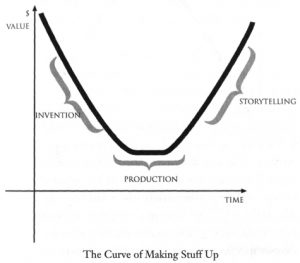All Marketers Tell Stories | Snappy Book Reviews
Welcome to the first Snappy Kraken book review!
One of our values at Snappy Kraken is continued education, and in the Marketing Department, part of that means each of us presenting a monthly book review.
Not all of the books we review will make it to a blog post, because not all of them will be relevant to Financial Advisers, or marketing as a whole, but all the videos will be up on our YouTube channel.
The reviews will be around 10 minutes, which by no means is enough time to cover every aspect of each book.
So, if you enjoy what we’re talking about, support the author and scoop up a copy for yourself.
Check out the video review below, or keep scrolling for a more in-depth discussion of the book.
Three Questions
All Marketers Tell Stories is an underground classic that explores the role of storytelling and authenticity in marketing.
At the onset of the book, Seth proposes three questions to ask of yourself, your boss, your company, and your mentors.
- What’s your story?
- Will the people who need to hear this story believe it?
- Is it true?
Far too often, people stop at #2 and expect results.
While some of the greatest tales ever told were fictions, you can’t tell the stories that lead to great marketing through the same medium.
At some point your audience will catch on to your disingenuousness, and that’s where the buck stops.
A Shift in Power (Curves)
Effective business has changed since the dawn of the Information Age, so why hasn’t marketing?
Traditionally, the ability to mass produce a product cheaper than your competitors all but guaranteed success.
No great invention, nor the best marketing in the world could reduce the cost of production.

But as technology and globalization have reduced the cost of production to the point of leveling the playing field, the value of ideas and storytelling have skyrocketed.
Being able to create a truly remarkable product or service that reimagines industries, catches attention, or solves a major problem now supersedes being able to produce goods at a low cost.
As does your ability to tell a meaningful, authentic story about your product that is not only recognizable, but one that resonates with the stories your prospects are already telling themselves.

There are No Small Stories, Only Small Marketers
If you're telling a small story, then you're not telling a story at all; you're just an inconvenience. Click To TweetThat sentence wasn’t full of sunshine and rainbows, but important truths rarely are.
Big, meaningful, impactful stories are the backbone of great marketing.
Key Takeaways
1) People’s Worldview and Frames Got There Before You Did
Your worldview can be something as broad as a political ideology or as minuscule as which candy bar you prefer at a convenience store.
Frames, on the other hand, are the ways that you use these opinions to position your story to have the most impact on prospects with particular world-views.
Changing others’ world-views is a fool’s errand, but understanding their world-views and designing the right frames for your product isn’t.
2) People Only Notice The New and Make a Guess
Most folks don’t have a short attention span, they’re just inundated with upwards of 10,000 advertisements every day.
Consumers only notice things that are new and eye-catching. The problem is, only have a split second to notice these things and recognize them, so most of the time, they only make deductions about what it could be.
The best thing you can do as a marketer is to set your frame up in a way that allows people to understand a decent bit about what your brand and company does and what you’re selling, and then allow them to make inferences that are more positive rather than negative.
3) First Impressions Start the Story
So you’ve caught their attention, now what?
This is where the frame you’ve chosen has the most impact. Whether someone sticks around long enough to hear your story depends on your ability to position your goods or service in a way that resonates with their worldview.
Spend some time determining what that worldview is for you client-base, and design your frame accordingly.
4) Great Marketers Tell Stories We Believe
Your prospects have been telling themselves stories since they first grasped the English language, and many of those stories have been set in stone for years.
Your job isn’t to try and change those stories.
It’s to write your own story that fits their narrative.
5) Marketers with Authenticity Thrive
Whatever the story is that you’re telling, you – and everyone else in your company – needs to believe it, too.
If ever there were a bad time to be a snake oil salesman, it’s today.
What’s the first thing prospects do when they come across your business? They look up reviews.
If you’re inauthentic, or worse, intentionally misleading with your story, it’ll be a short time before the internet knows about it.
Seth Godin, as always, did an amazing job with this book.
If you enjoyed this review, then make sure you buy the book. We’d also appreciate it if you connected with us on social media (Facebook, Twitter, and Linkedin).
Be on the lookout for more book reviews!
Book A Demo Today
Discover how Snappy Kraken helps advisors grow with a powerful marketing system
Request a demo

